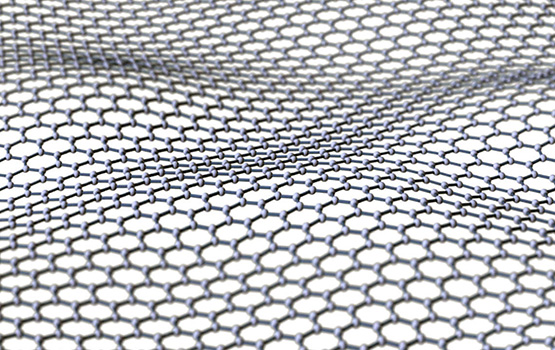Aug 27 2020
Scientists from Monash University in Australia have now designed the world’s first technology that could enable industries to detect and export high-quality graphene in a faster, cheaper, and more precise manner than present-day techniques.
 Monash University engineers have created world-first technology to help industry identify high-quality graphene cheaper, faster, and more accurately than current methods. Image Credit: Monash University.
Monash University engineers have created world-first technology to help industry identify high-quality graphene cheaper, faster, and more accurately than current methods. Image Credit: Monash University.
Using the data set of an optical microscope, the engineers successfully created a machine-learning algorithm that can define the quality and properties of graphene without any kind of bias, all in just 14 minutes. The study was recently published in Advanced Science—an international journal.
The new technology could well be a game-changer for scores of graphene or graphene oxide producers worldwide. It will allow these producers to increase the reliability and quality of their graphene supply chain in a relatively shorter time.
At present, manufacturers can only identify the properties and quality of graphene applied to a product once it has been produced.
Through the new machine-learning algorithm, which could be launched worldwide with commercial support, graphene manufacturers can be certain of quality products and prevent the costly and time-intensive procedure of a range of characterization techniques used for detecting the properties of graphene, like the size and thickness of the atomic layers.
The breakthrough study was headed by Professor Mainak Majumder from the Department of Mechanical and Aerospace Engineering at Monash University and by the Australian Research Council’s Hub on Graphene Enabled Industry Transformation.
Md Joynul Abedin and Dr Mahdokht Shaibani from the Department of Mechanical and Aerospace Engineering at Monash University, as well as Titon Barua from Vimmaniac Ltd, Bangladesh, are co-authors of the study.
Graphene possesses extraordinary capacity for electric and thermal conductivity. It is widely used in the production of membranes for water purification, energy storage and in smart technology, such as weight loading sensors on traffic bridges.
Mainak Majumder, Professor, Department of Mechanical and Aerospace Engineering, Monash University
Professor Majumder continued, “At the same time, graphene is rather expensive when it comes to usage in bulk quantities. One gram of high quality graphene could cost as much as $1,000 AUD ($720 USD) a large percentage of it is due to the costly quality control process.”
“Therefore, manufacturers need to be assured that they’re sourcing the highest quality graphene on the market. Our technology can detect the properties of graphene in under 14 minutes for a single dataset of 1936 x 1216 resolution. This will save manufacturers vital time and money, and establish a competitive advantage in a growing marketplace,” Professor Majumder further added.
Graphene was discovered in 2004, and since then, it has been hyped as a wonder material for its exceptional thin, lightweight, and ultra-flexible characteristics. This material is created by exfoliation of graphite—a crystalline form of carbon with atoms organized in a hexagonal fashion; graphite contains several graphene layers.
But converting this potential to usable and real-life products has been rather slow. One reason for this slow translation is the dearth of consistency and reliability of what is commercially usually available as graphene.
Liquid phase exfoliation (LPE) is a technique that is extensively used for manufacturing graphene, as well as graphene oxide sheets. This process involves stripping the single-layer sheets from its three-dimensional (3D) counterpart such as graphite oxide film, graphite, or expanded graphite, through shear-forces. However, this can only be captured with a dry sample (that is, as soon as the graphene has been coated on a glass slide).
Although there has been a strong emphasis on standardisation guidelines of graphene materials, there is virtually no way to monitor the fundamental unit process of exfoliation, product quality varies from laboratory to laboratory and from one manufacturer to other.
Dr Mahdokht Shaibani, Department of Mechanical and Aerospace Engineering, Monash University
Dr Shaibani continued, “As a result, discrepancies are often observed in the reported property-performance characteristics, even though the material is claimed to be graphene.”
“Our work could be of importance to industries that are interested in delivering high quality graphene to their customers with reliable functionality and properties. There are a number of ASX listed companies attempting to enter this billion-dollar market, and this technology could accelerate this interest,” Dr Shaibani further added.
The team applied the machine-learning algorithm to a total of 18 graphene samples—of which eight were obtained from commercial sources and the remaining were manufactured in a laboratory setting under-regulated processing conditions.
The researchers used a quantitative polarized optical microscope and eventually developed a method for identifying, categorizing, and measuring exfoliated graphene in its natural dispersion form.
To increase the data produced from huge numbers of samples and an unlimited number of images in a rapid and efficient way, the team created a new, unsupervised machine-learning algorithm to identify data clusters of analogous nature, and subsequently apply image analysis to measure the amounts of each data cluster.
According to Mr Abedin, this technique could be used for classifying and measuring other 2D materials.
The capability of our approach to classify stacking at sub-nanometer to micrometer scale and measure the size, thickness, and concentration of exfoliation in generic dispersions of graphene/graphene oxide is exciting and holds exceptional promise for the development of energy and thermally advanced products.
Md Joynul Abedin, Study Co-Author, Department of Mechanical and Aerospace Engineering, Monash University
Professor Dusan Losic, Director of Australian Research Council’s Hub on Graphene Enabled Industry Transformation, stated: “These outstanding outcomes from our ARC Research Hub will make significant impact on the emerging multibillion dollar graphene industry giving graphene manufacturers and end-users new a simple quality control tool to define the quality of their produced graphene materials which is currently missing.”
Journal Reference:
Abedin, M, J., et al. (2020) A High Throughput and Unbiased Machine Learning Approach for Classification of Graphene Dispersions. Advanced Science. doi.org/10.1002/advs.202001600.